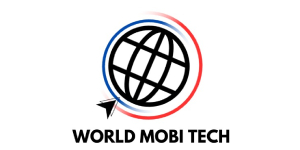The educational landscape has experienced a significant shift in recent years. With the advent of technology, e-learning has emerged as a powerful alternative to traditional classroom-based education. Both e-learning and traditional learning offer unique advantages and challenges. The choice between the two often depends on individual preferences, learning styles, and career goals. This article explores the key differences between e-learning and traditional learning, weighing the pros and cons of each to help you make an informed decision about your educational path.
Accessibility and Flexibility
E-Learning:
E-learning stands out for its unparalleled accessibility. With an internet connection and a digital device, students from anywhere in the world can access quality education. This mode of learning breaks down geographical barriers, providing opportunities for individuals who might otherwise be unable to attend physical institutions. Additionally, e-learning offers significant flexibility. Students can learn at their own pace and schedule, making it an ideal option for working professionals, parents, and anyone with a busy lifestyle.
Traditional Learning:
Traditional learning typically requires physical attendance at a specific location, such as a school or university. This requirement can foster a sense of community and belonging among students. However, it also limits accessibility for those unable to commute or relocate. Traditional learning often follows a fixed schedule, which may not be convenient for everyone, especially those with rigid work commitments or personal responsibilities.
Learning Environment and Interaction
E-Learning:
E-learning provides a digital environment where students can access course materials, participate in discussions, and complete assignments online. This mode of learning offers convenience but may lack the face-to-face interaction that some students find beneficial. However, many e-learning platforms incorporate interactive elements such as live webinars, discussion forums, and virtual labs to enhance engagement and simulate a classroom experience.
Traditional Learning:
Traditional learning offers a structured environment with direct interaction between students and instructors. This face-to-face interaction facilitates immediate feedback, personalized instruction, and collaborative learning experiences. The physical presence in a classroom can also help students stay focused and motivated. The social aspect of traditional learning can be particularly appealing, providing opportunities for building relationships and networking.
Course Variety and Specialization
E-Learning:
E-learning platforms offer a wide range of courses across various disciplines, from computer science and business to arts and humanities. Students can choose from short courses, professional certificates, and even full degree programs. This variety allows learners to tailor their education to their specific interests and career goals. Additionally, many e-learning platforms partner with top universities and industry leaders to provide high-quality content.
Traditional Learning:
Traditional educational institutions also offer a broad spectrum of courses and degree programs. However, the availability of specialized courses may be limited by the institution’s resources and faculty expertise. Students may need to relocate or transfer to a different school to pursue certain specializations, which can be costly and time-consuming. However, traditional institutions often have extensive resources, such as libraries and labs, to support specialized learning.
Cost and Affordability
E-Learning:
E-learning is often more cost-effective than traditional learning. Many online courses are free or significantly cheaper than their in-person counterparts. Additionally, students can save on expenses such as commuting, housing, and course materials. Financial aid and scholarships are also available for many online programs, making education more accessible to a wider audience.
Traditional Learning:
Traditional learning can be more expensive due to tuition fees, accommodation costs, and other associated expenses. While scholarships and financial aid are available, the overall cost of attending a physical institution is generally higher. However, traditional degrees from prestigious universities can carry significant weight in the job market, potentially justifying the investment.
Learning Styles and Personal Preferences
E-Learning:
E-learning caters to various learning styles, offering multimedia content such as videos, interactive quizzes, and simulations. This diversity can enhance the learning experience for visual and auditory learners. However, e-learning requires a high degree of self-discipline and motivation, as students must manage their own schedules and stay on track with their studies.
Traditional Learning:
Traditional learning can be more suitable for kinesthetic learners who benefit from hands-on activities and physical presence in a classroom. The structured environment and direct supervision can help students stay motivated and focused. Additionally, the social aspect of traditional learning can be appealing to those who thrive in collaborative settings.
Assessment and Feedback
E-Learning:
E-learning platforms use various assessment methods, including quizzes, assignments, and peer reviews. Automated grading systems can provide immediate feedback, allowing students to track their progress and identify areas for improvement. However, the lack of personalized feedback from instructors can be a drawback for some learners.
Traditional Learning:
Traditional learning offers more opportunities for personalized feedback from instructors. Face-to-face interactions during lectures, office hours, and lab sessions allow for immediate clarification of doubts and detailed feedback on assignments. This personalized attention can be beneficial for students who need additional support and guidance.
Career Opportunities and Networking
E-Learning:
E-learning can provide valuable skills and knowledge that are directly applicable to the job market. Many online courses are designed in collaboration with industry partners, ensuring that the content is relevant and up-to-date. However, networking opportunities may be limited compared to traditional learning environments. Some e-learning platforms address this by offering virtual networking events and career services.
Traditional Learning:
Traditional learning environments offer extensive networking opportunities through campus events, internships, and alumni networks. Building relationships with peers, instructors, and industry professionals can open doors to job opportunities and career advancement. The prestige of certain institutions can also enhance employability.
Technology and Innovation
E-Learning:
E-learning leverages the latest technologies to enhance the learning experience. Interactive tools, virtual simulations, and AI-driven personalization are becoming increasingly common. These innovations can provide a more engaging and effective learning experience. Additionally, the ability to access courses on various devices, including smartphones and tablets, adds a level of convenience and flexibility.
Traditional Learning:
While traditional learning institutions also incorporate technology, the adoption rate can be slower compared to e-learning platforms. However, traditional learning benefits from established infrastructures, such as labs and libraries, which provide essential resources for in-depth study and research. Hybrid models that combine in-person and online elements are also gaining popularity, offering a balanced approach.
The Future of Education
As technology continues to advance, the lines between e-learning and traditional learning are becoming increasingly blurred. Hybrid models that combine online and in-person instruction are gaining popularity, offering the best of both worlds. These models provide the flexibility and accessibility of e-learning while retaining the benefits of face-to-face interaction and hands-on learning.
Hybrid Learning:
Hybrid learning combines the strengths of e-learning and traditional learning, providing a flexible and engaging educational experience. Students can access course materials online while participating in in-person classes and labs. This approach allows for personalized learning while maintaining the benefits of direct interaction and hands-on activities.
Emerging Trends:
Emerging trends in education include personalized learning through AI and machine learning, immersive technologies like virtual and augmented reality, and microlearning for focused, bite-sized lessons. These trends are shaping the future of education, making it more adaptable, engaging, and accessible.
Both e-learning and traditional learning have unique advantages and challenges. E-learning offers flexibility, accessibility, and a diverse range of courses, making it an excellent choice for self-motivated learners and those with busy schedules. Traditional learning provides a structured environment, direct interaction, and valuable networking opportunities, making it ideal for those who thrive in collaborative settings and seek a more immersive educational experience.
Ultimately, the choice between e-learning and traditional learning depends on individual preferences, learning styles, and career goals. As education continues to evolve, the availability of hybrid models ensures that learners can benefit from the strengths of both approaches, paving the way for a more personalized and adaptable future of education. Whether you choose e-learning, traditional learning, or a combination of both, the most important factor is your commitment to continuous learning and personal growth.


